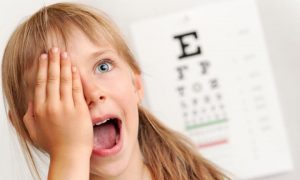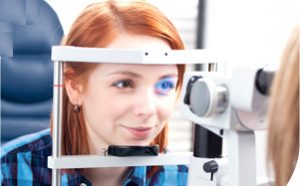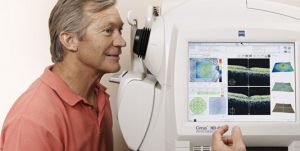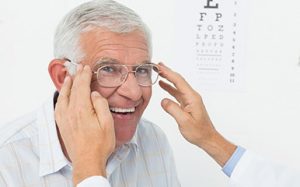Children: born to 18 years old
 It is essential to check children’s vision when they are first born and again during preschool and school years. The American Academy of Ophthalmology recommend the following exams:
It is essential to check children’s vision when they are first born and again during preschool and school years. The American Academy of Ophthalmology recommend the following exams:
Newborn: Red reflex test
Preschooler, age 3: Visual acuity and eye alignment for misaligned eyes (strabismus), “lazy eye” (amblyopia), refractive errors (myopia, hyperopia, astigmatism) or another focusing problem.
School age: Visual acuity and eye alignment. Nearsightedness (myopia) is the most common refractive error in this age group and can be corrected with eyeglasses.
Adults Under 40:
 If your eyes are healthy and vision is good, have a complete exam in eye clinic once in your 20s and twice in your 30s. If you experience an infection, injury, eye pain or unusual flashes or patterns of light, or another condition, visit my clinic for treatment and follow my recommendations for follow-up exams.
If your eyes are healthy and vision is good, have a complete exam in eye clinic once in your 20s and twice in your 30s. If you experience an infection, injury, eye pain or unusual flashes or patterns of light, or another condition, visit my clinic for treatment and follow my recommendations for follow-up exams.
Exceptions: If you wear contact lenses, see me annually. If you have diabetes or have a family history of eye disease, talk with me regarding how frequently your eyes should be examined.
Adults 40 to 60:
 Early signs of age-related eye diseases, including cataract, glaucoma, diabetic retinopathy and age-related macular degeneration can begin in midlife but often do not noticeably affect the vision until later. So it’s important to get a baseline comprehensive eye exam at age 40, even for people who have no symptoms or known risk factors.
Early signs of age-related eye diseases, including cataract, glaucoma, diabetic retinopathy and age-related macular degeneration can begin in midlife but often do not noticeably affect the vision until later. So it’s important to get a baseline comprehensive eye exam at age 40, even for people who have no symptoms or known risk factors.
Adults Over 60:
 It’s important to have a complete eye exam with me every year or two after age 60 to check for age-related eye diseases such as age-related macular degeneration, diabetic retinopathy, glaucoma, cataract and other eye conditions.
It’s important to have a complete eye exam with me every year or two after age 60 to check for age-related eye diseases such as age-related macular degeneration, diabetic retinopathy, glaucoma, cataract and other eye conditions.